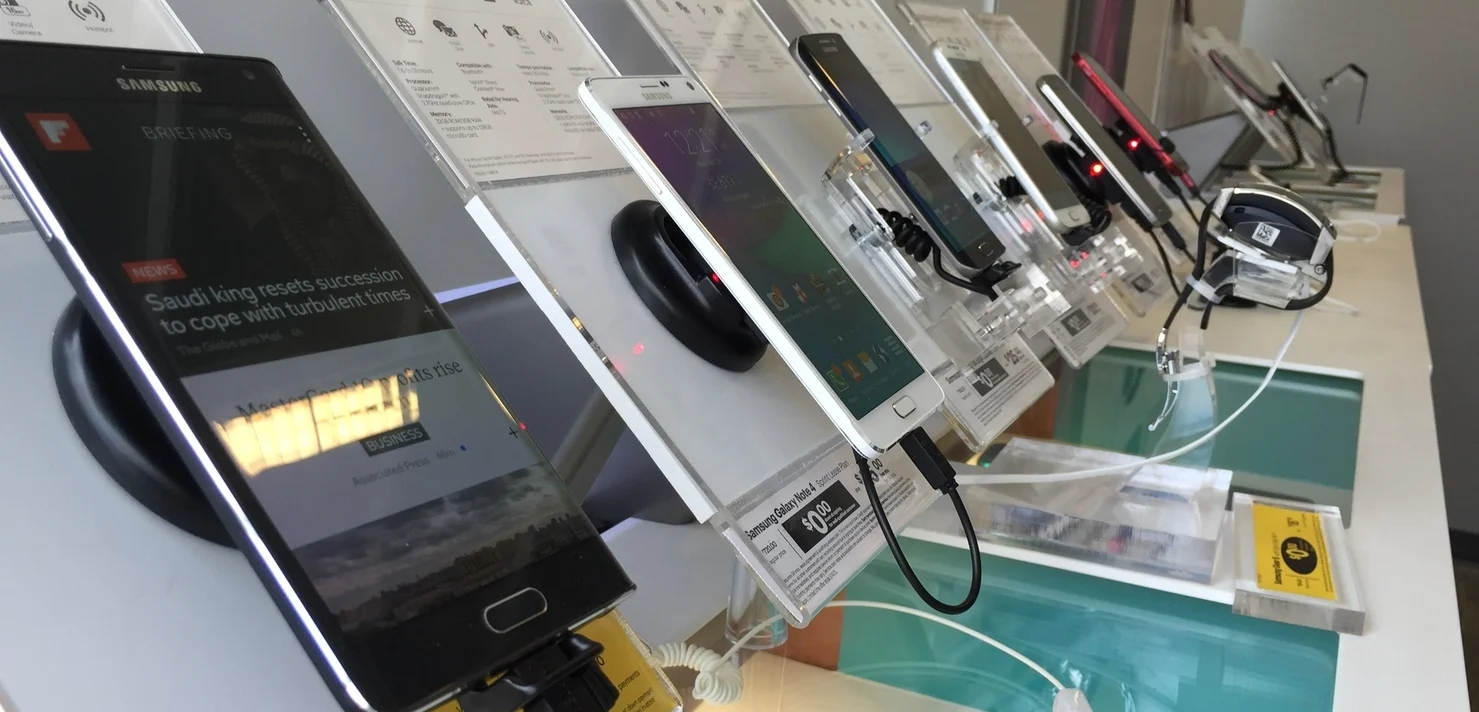For my final thesis, I spent my last semester obsessing over cell phones. I wanted to take on a project that combined my past experience as a cell phone technician with my new knowledge as a designer and with that in mind, this portfolio piece is intentionally long as it details my design process and journey from beginning to end.
Click here for my poster and summary of my project
RESEARCH
I began the this project with an educated hunch. I was aware of this new trend in purchasing phones, and leasing and payment plans were getting popular and getting a lot of momentum. My prediction was that this method of payment would change the way mobile retail operated.
Turns out I was only partially correct. The payment plans are a part of a much larger chain of events:
My research found that the payment plans when you place them next to three key events (The Universal SIM, FCC Unlock Ruling, and the Net Neutrality Ruling), sets the stage for the large manufactures (Apple and Samsung) to become more independent of the US service providers (Verizon and AT&T). The payment plans first went into effect in early 2013 when T-mobile announced they were doing away with the subsidized model, and this was a great success with these and the other big 3 (Verizon, AT&T, and Sprint) followed suit. The other reason for this is due to a bill that was going into effect in 2014 where it ruled that any customer owned phone could no longer be prevented by the carrier to become unlocked. Under the old subsidy model, after you pay the $200, you own your phone... BUT when you are making payments, ownership does not happen until the final payment. Well Apple saw this coming and tested the a new internal SIM card built into the iPad 2 which in theory allows a user to change carriers at will. So why does this matter? Since customers are now paying full retail for their handsets, there is nothing to prevent Apple and Google from selling handsets directly allowing customers to choose what carrier they want. Combine this with the Net Neutrality ruling that says mobile and landline internet services are equal, and the carriers are in a position to become significantly weaker.
I was able to follow up my research with field work and was able to spend a week observing customers at Sprint location. I was also able to interview employees (both sales and technicians) about the current warranty process and as a result I was able to produce several customer journey maps highlighting various warranty scenarios.
***Google FI, was announced at the conclusion of my project, but Google is piloting an experimental service where Google is your sole provider.
With a quick analysis of the current market, when you compare Apple to the top 4 Android manufactures, they each compete with Apple on pricing, technology, and even similar warranties to AppleCare +. But where Apple has one thing that no other phone manufactures have, Apple owned retail stores that not only sell the products but service those products. This was the framed my thesis.
If the rules shift to favor the manufactures, who is in position to completely benefit from the ability to sell, teach and service their own handsets? Apple. So how do the smaller manufactures compete in a marketplace where they do no have retail presence to service their phones.
During the ideation and implementation stages I was able to consult a store manager all throughout this project. This was extremely important because he kept me grounded through out the process. Which is why my design has minimal need for an employee to interact with it, other than stocking it with inventory, the kiosk would be something you could just point to. But also it had to be simple for customers to use and not require a lot of customer information (account PINs... in the store, these are either reset or bypassed most of them). It also would be a great selling tool to increase the buy backs of a handset, this is a heavy incentive for his store and it is also good for the environment because those phones are either resold or properly recycled.
Deployment of these handset impact the customer journey during the one key metric that I wanted to reduce. Time with a broken handset.
I feel that my solution is a great first step toward making the warranty process a little less stressful and a lot more bearable for the customer and the manufacture.
Reflection
This project challenged be because it was an individual project, but it meant I could aim this where I wanted. I discovered how powerful journey maps can be and will be a go to method for me in the future, but I also enjoy every aspect of interacting with people while designing. Be it an interview, an observation, or a user test... though coming from the world of retail I really do question how often actual customers and employees are consulted instead of a set up environment. Though the biggest insight about this project, I know deep down that if I had a team this project would be even better (To be fair I did bring a store manager into my design process while doing the concepts)
Click here for the journey maps and full poster





